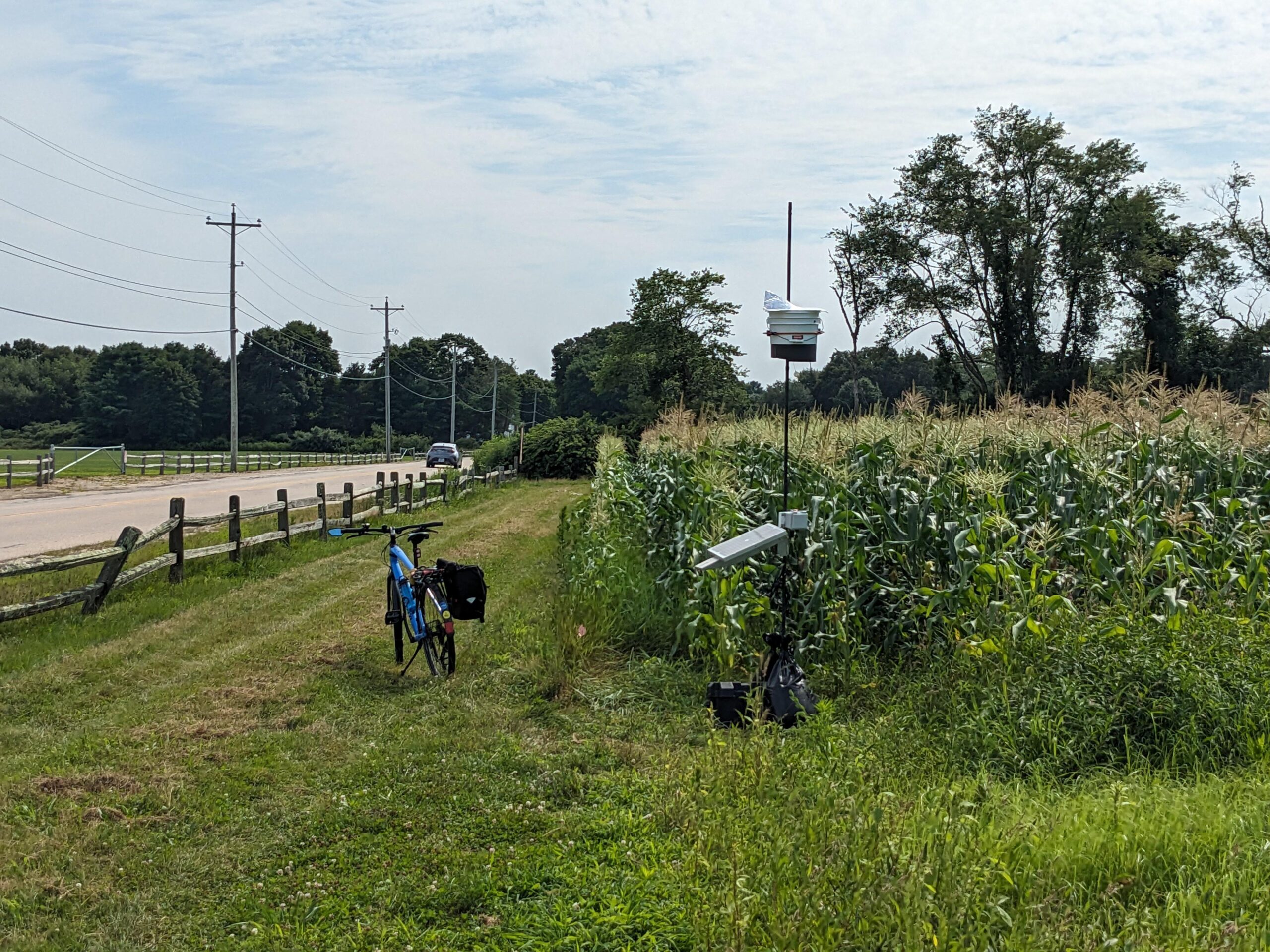Two University Professors recently composed a green laser tailored towards the prevention of bird feeding on small plantings of sweet corn in surrounding Rhode Island areas.
Rebecca Brown, a professor in plant sciences and entomology and David Brown, a professor in computer sciences and statistics have combined their skill sets to bring farming technology known as the “laser scarecrow” to Rhode Island.
Some of the current methods being utilized to prevent birds from destroying crops can be disruptive and dangerous to nearby townsfolk, David said.
“I’ve mentioned shotguns which, especially in our small areas with people living nearby, is not a good solution,” David said.
In hopes to create a safer and more effective method regarding prevention of feeding on sweet corn, the married couple referenced laser methods to develop their own.
“She [Rebecca] found that some people had been able to deter birds using lasers,” David said. “She said, ‘hey, David, do you think you could do an Arduino thing that kind of moved a laser around?’ That was in 2015, I guess the answer was yes.”
Mr. and Mrs. Brown crafted a quick moving fat beam laser, which protects both birds and sweet corn. The URI Cooperative Extension Service along with extension agents from Massachusetts and New York helped the Brown’s develop this laser, similar to those at DJ light shows, David said.
The enclosure of the laser consists of a 3.5 gallon bucket turned upside down with the bottom cut off.
“It really just looks like somebody stuck a bucket on the side of a pole,” David said.
Birds like humans are very sensitive to green lights which is what the laser scarecrow uses, David said. The light will scare birds away but is unlikely to harm them under any of the circumstances the laser is being used for.
“The only time I know of that people have demonstrated harm to birds from lasers is in a laboratory setting where they actually immobilized the bird and shined a laser straight into its eye,” David said. “That is not what we’re doing, we have no control over the birds and were deliberately moving the laser around fast.”
Mr. and Mrs. Brown ideally would plan to measure the eyes of birds who have potentially been exposed to lasers as a way to see if there is damage, however, funding is tricky, David said.
“The people who are interested in funding the research to keep the birds out of the corn don’t really care what happens to the birds because one of their alternatives is a shotgun,” David said.
Another difficult aspect regarding current research regards the intelligence of surrounding birds.
“The birds actually learn to say, ‘Oh look at that, I see somebody on a tractor I better go see if my sweet corn is ready,’” David said. “They start to actually follow the field workers and recognize when the corn is getting ripe.”
F armers in Rhode Island who are not controlling these birds can lose anywhere between 80% to 90% of their crops during the growing season considering it only takes a couple of kernels to ruin the whole plant, David said.
“You’re going to look at this nibbled ear of corn in the grocery store and you’re gonna buy that one?” David said.
Mr. and Mrs. Brown have a few n ext steps in the process including a small grant of $29,998, according to RhodyToday . Rebecca, who is in charge of grant writing, scouting out collaborators and project writing has also been in charge of that grant, David said.
She has used it to research possible ways the laser could be implemented into aquaculture, which commonly utilizes floating cages to grow oysters.
“Ducks like to perch on floating oyster cages, which is where oysters grow best,” David said. “We need to make sure that the laser is even safer because people are allowed to go kayaking and boating and swimming in these ponds, which are right in with the oyster gear.”
In addition, the pair is looking to potentially adapt the laser for berries, which will be more difficult considering unlike sweet corn, berry patches grow in all different heights.
Mr. and Mrs. Brown are looking to construct a mechanism that would mount the scarecrow higher up allowing it to point down and get better coverage of the patches, David said.
The pair will continue to develop and plan these additional implementations throughout the spring.
For more information regarding the laser scarecrow project visit the URI laser scarecrow project website. URIlaserscarecrowproject

